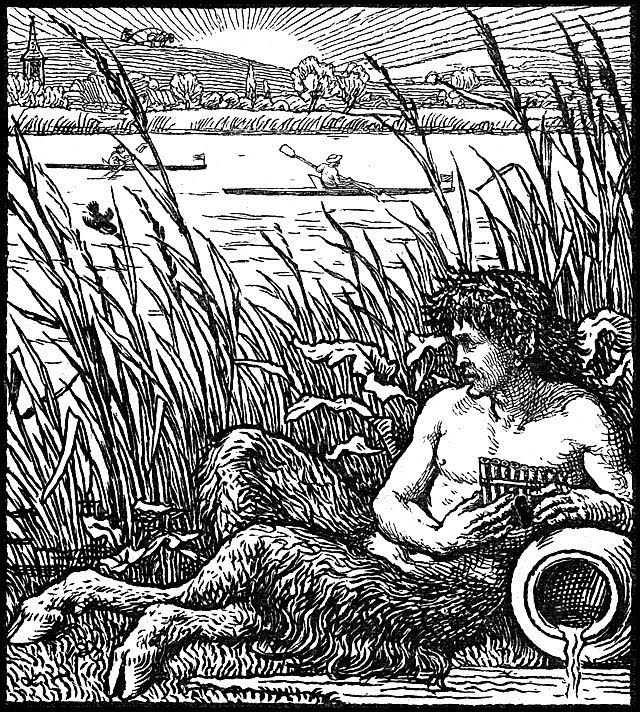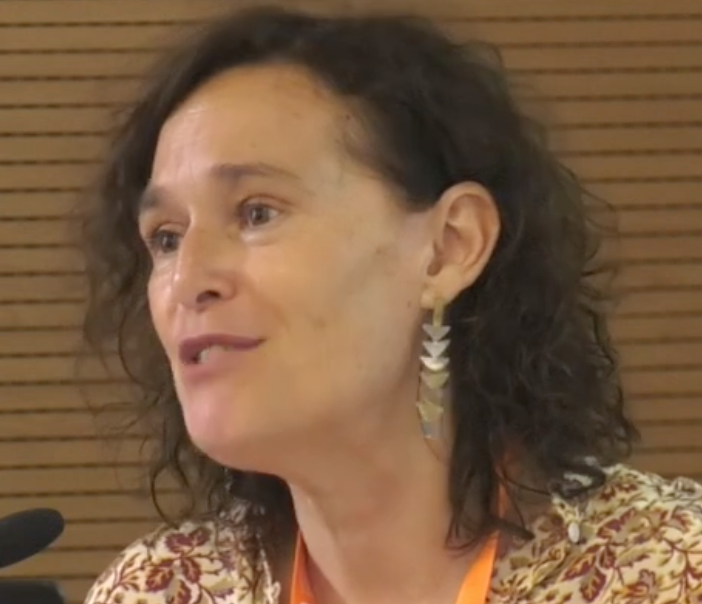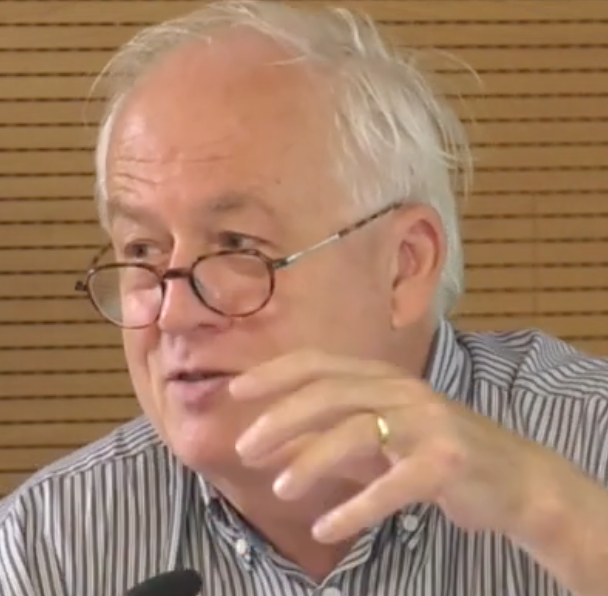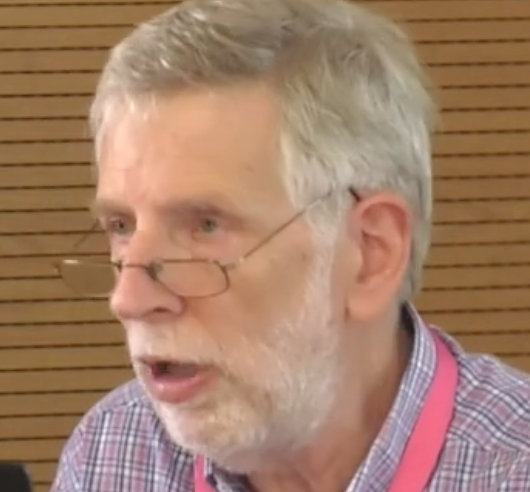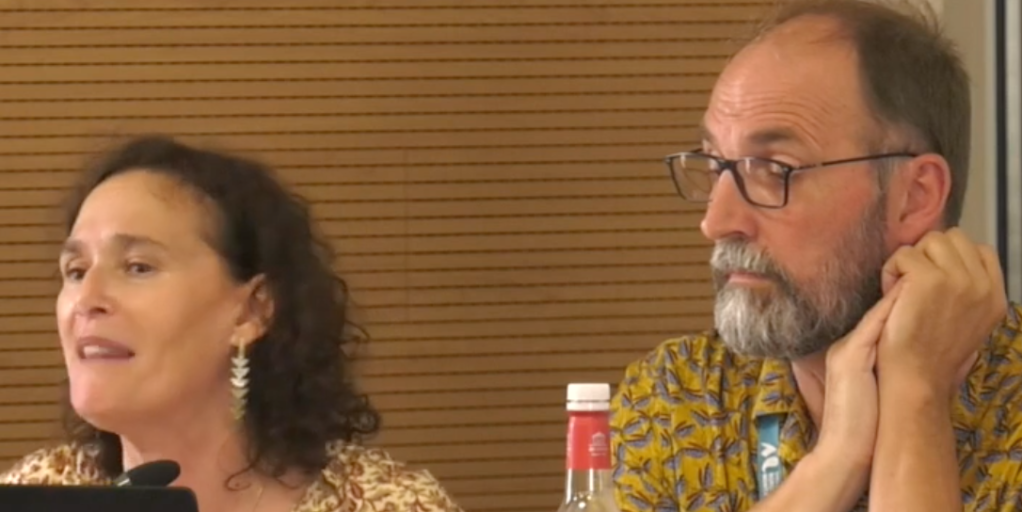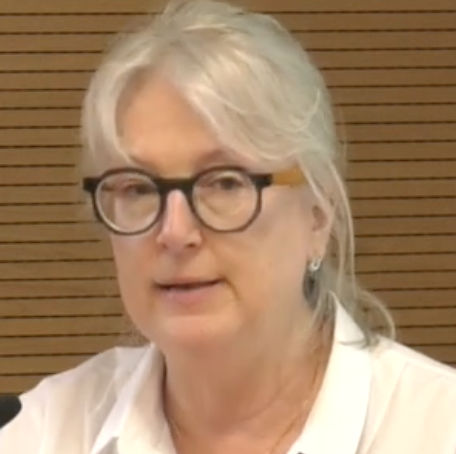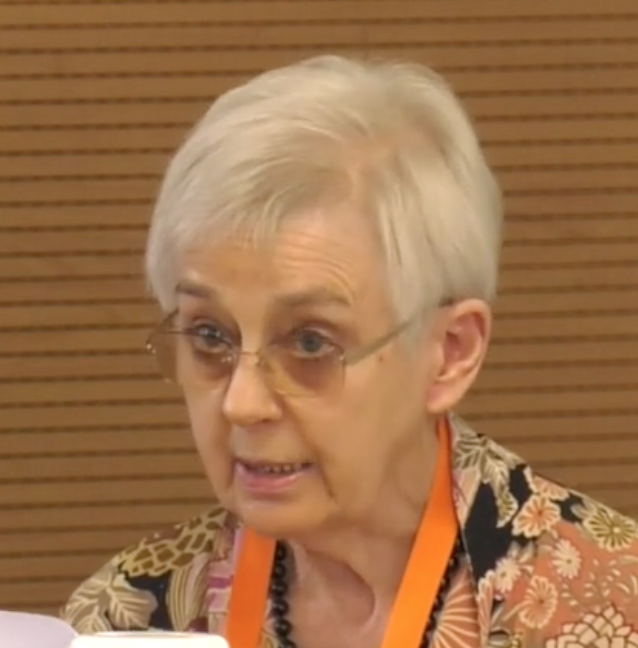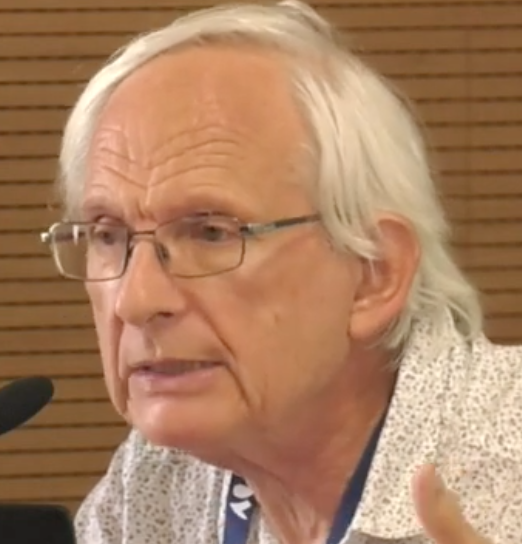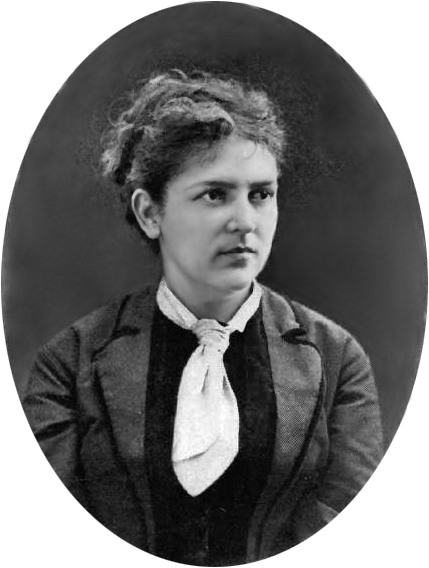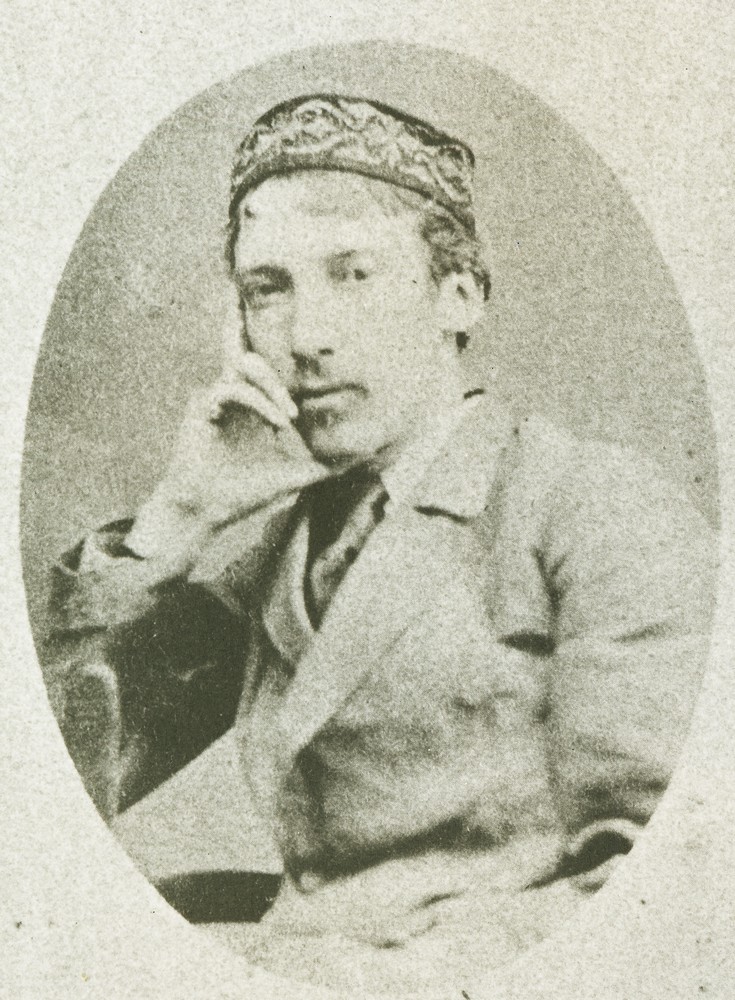Archive for the ‘Essays’ Category
Stevenson and Dante
A post contributed by Robert-Louis Abrahamson
In his 1878 essay ‘Pan’s Pipes’, Stevenson describes those who ‘hold back the hand from the rose because of the thorn, and from life because of death’ as ‘tooth-chattering ones’. The phrase ‘tooth-chattering’ posed a problem when compiling the notes for my edition of Virginibus Puerisque. Like so many other phrases in the essays, it seemed to be lifted or adapted perhaps from the Bible, or Shakespeare, or some French idiom, but I could find no sources. Richard Dury and I pondered this problem, and the best we could come up with was: ‘an invention of Stevenson’s based on the ancient “kindly ones” (that is, the Eumenides, or Furies)’.
Nearly five years after the edition of Virginibus Puerisque came out, I can supply what I think is a better note. In Canto 3 of Dante’s Inferno, the souls waiting to be transported across the Acheron quake when they hear Charon’s words of doom (‘I come to conduct you nelle tenebre eterne, in caldo e in gelo, into eternal darkness, into fire and ice’). These are the souls who have lost all the goodness life had offered them. Forlorn and naked, changing colour, Dante shows them as they dibattero i denti, they chattered with their teeth. These, of course, are the ‘tooth-chattering ones’. In his essay about one mythic story, Pan, Stevenson draws on another myth, Dante’s journey, and if we catch the infernal allusion, we see these ‘recreant[s] to Pan’ in a much darker light.
Louis, Fanny and ‘Charles of Orleans’
When Stevenson first met Fanny Osbourne and fell in love he accepted an addition she suggested to his latest essay. Her contribution was first noted when preparing the essay for the upcoming New Edinburgh Edition of Stevenson’s Familiar Studies of Men and Books.
On 30 July 1876 Stevenson reported that his essay on ‘Charles of Orleans’ was finished and had been sent off to the Cornhill. The following month he left Edinburgh for London and then Antwerp where he was to begin his Inland Voyage river and canal journey on 25 August. In a letter to Colvin written just before leaving Edinburgh he still hadn’t heard from the Cornhill about the essay (Letters 2: 178, 181).
In the same letter to Colvin he said ‘I have an ultimate purpose of reaching Fontainebleau by water’, but he in fact ended at Pontoise, about about 17 km via the river Oise to the Seine below Paris. On 13 or 14 September he wrote to his mother from Pontoise mentioning ‘a bold, desperado sort of post card from my father; anent a proof of mine; which he has carefully violated as usual’ (Letters 2: 190). This can only refer to the ‘Charles of Orleans’ proofs. The same incident is alluded to at the end of An Inland Voyage, where he says a packet of letters picked up in Compiègne ended the holiday feeling and at their next stop, ‘a letter at Pontoise decided us’, and brought the trip to an end (Tusitala 17: 88, 110).
It is not clear whether it had been agreed that Thomas Stevenson would read the proofs when they arrived, or whether he took it upon himself to open the envelope: certainly, Stevenson did not welcome this interference, and two-and-a-half years later made sure his father did not see the proofs of Travels with a Donkey (Maixner: 64).
*
After Pontoise Stevenson and Simpson continued by rail to Paris and Grez, where they presumably arrived around 16 September—along with the two canoes (Lloyd Osbourne remembers them there). And there at the artist’s inn of Chez Chevillon, Stevenson met his future wife Fanny Osbourne. We have Lloyd Osbourne’s later recollection of Stevenson arriving, vaulting though the open window from the street and being greeted with delight by the company around the dinner table. Louis was attracted to Fanny first; Fanny, we know from her letters, was attracted to Bob Stevenson, but at a certain point he told her that his cousin was more worthy of her attention. (All this un-Victorian fluidity and freedom of relationships must have seemed like a new world to Louis.)
Anyway, they fell in love, ‘step for step, with a fluttered consciousness, like a pair of children venturing together into a dark room’, as Stevenson puts it in ‘Falling in Love’. Lloyd Osbourne remembers how Stevenson and his mother ‘would sit and talk interminably on either side of the dining-room stove while everybody else was out and busy, under vast white umbrellas, in the fields’ (Tusitala 17: xi).
*
One day, Stevenson must have given Fanny those proofs of his latest essay, ‘Charles of Orleans’ to read. The text published in the Cornhill in December of that year contains the following passage:
The reader will remember how Villon’s mother conceived of heaven and hell and took all her scanty stock of theology from the stained glass that threw its light upon her as she prayed. And there is scarcely a detail of external effect in the chronicles and romances of the time, but might have been borrowed at second hand from a piece of tapestry. It was a stage in the history of mankind which we may see paralleled, to some extent, in the first infant school, where the representations of lions and elephants alternate round the wall with moral verses and trite presentments of the lesser virtues. So that to live in a house of many pictures was tantamount, for the time, to a liberal education in itself.
After reading the essay, Fanny suggested the parallel between knowledge conveyed through images in the Middle Ages and the images in the classroom of the infant school, and Stevenson (always interested in parallels between primitive and infant psychology) must have inserted it on the proofs.
We know this because when the essay was collected in Familiar Studies in 1882, Stevenson, replying to a letter from Alexander Japp, said, ‘The elephant was my wife’s: so she is proportionately elate you should have have picked it out for praise’ (Letters 3: 310).
a-moral
In his essay ‘A Gossip on Romance’ (1882, then in Memories and Portraits, 1887), Stevenson writes
There is a vast deal in life and letters both which is not immoral, but simply a-moral.
The word ‘a-moral’ would have struck contemporary readers as something new.
- It is the earliest citation in the OED
- It is apparently not a borrowing from French: in Trésor de la Langue Francaise the earliest use of amoral is attributed to the critic and dramatist Jules Lemaître in 1885, again in contrast with ‘immoral’: ‘[If we consider the world devoid of the idea of merit], S’il n’est pas immoral, il faut qu’il soit amoral‘ (italics in the original) (Les Contemporains, Première série, undated (the Preface says the articles were written in 1884 and 1885), 67).
The word unmoral had previously been used with the same meaning. The OED entry confuses matters by giving one definition for it: ‘Not moral; having no moral sense or standards, immoral; unconcerned with morality’, where they would have done better to distinguish two: ‘1. Not moral; having no moral sense or standards, immoral’ and ‘2. unconcerned with morality’. From the citations, the first use of the word in this second sense is c. 1840–50. So the concept was in the air but expressed by the ambiguous term unmoral.
It was clearly new in the 1880s, as both Stevenson and Lemaître use it in a context that brings out its meaning, and they additionally draw attention to it by the hyphen after the prefix and the use of italics.
However, Stevenson seems to have been preceded in the use of the word by a few years. Advanced Google Book Search reveals an earlier use of amoral in an article in the Quarterly Review for 1874 ‘Primitive Man: Tyler and Lubbock’, which I have found referred to in the Pall-Mall Budget for 31 July 1874, p. 13: ‘[There exists no evidence] for the evolution of a moral state from a pre-existing brutal and amoral (sic) condition of mankind’ (says the PMB reviewer quoting the article in the QR and pointing out the unusual word by the use of sic). The PMB reviewer says that the story of the Fall refers to ‘such an evolution from an “amoral” state of innocence to a moral knowledge of good and evil’ but adds that the important point is that the ‘scruples of savages’ are not ‘real morality’ ‘but rather morality in the act of being evolved out of something “amoral” (we thank the reviewer for that word)’. This shows the coining of the word in the QR in 1874, where it is used of a society ‘without moral standards’ and given a negative connotation in the phrase ‘brutal and amoral’. The PMB reviewer goes on to use it to refer to a society in a state either of Edenic innocence or of savagery, where in the second case amoral again designates a more primitive, less evolved state.
Stevenson therefore did not invent the concept (as it was around in the use of unmoral since c. 1850), nor did he invent the form (which seems to date from 1874), but his innovation is the use of amoral in a neutral and ethical sense: not of primitive and inferior individuals and societies but of morally-neutral choices and actions, since then the dominant use.
Stevenson and Bourget: an enigma
Why was RLS so enthusiastic about Sensations d’Italie?

Paul Bourget (1852–1935), French critic, essayist, novelist and poet, much appreciated in his own day, is not now widely known even in France. The publisher’s presentation of an introductory volume Avez-vous lu Paul Bourget? (2007) begins by saying that he is now ‘little known, even scorned’ (‘méconnu, voire méprisé’). Quite a downfall for a writer who was nominated for the Nobel prize no fewer than four times.
Stevenson’s reaction to Sensations d’Italie

Bourget’s friend Henry James sent Stevenson a copy of Sensations d’Italie (1891), which he later described to Stevenson as ‘one of the most exquisite things of our time’ (Letters of Henry James, I, p. 188). Stevenson was enthusiastic—sent off immediately for all Bourget’s essays and at the same time wrote ‘I have gone crazy over Bourget’s Sensations d’Italie (L7, 197, 205) and told James ‘I am delighted beyond expression by Bourget’s book; he has phrases which effect me almost like Montaigne’ and the following day told him, ‘I have just been breakfasting at Baiae and Brindisi, and this charm of Bourget hag-rides me. […] I have read no new book for years that gave me the same literary thrill as his Sensations d’Italie‘ (L7, 210–11) Not only this, but he looked forward to meeting Bourget on a planned trip to Europe and dedicated Across the Plains to him, the only one of his volumes not dedicated to a personal friend or family member.
You cannot step twice into the same book
Some years ago, inspired by such an impressive recommendation, I bought a second-hand copy of Sensations d’Italie, expecting it to be a cross between Montaigne and Proust and promising myself an exquisite reading experience. Unfortunately, what struck me then were the mentions of trains and inns and long appreciations of paintings. It did not resemble Stevenson’s own travel writing: there are no descriptions of his feelings or of the people he meets, no detached irony.
Why was Stevenson so enthusiastic? The best way to answer this question would be to look at his copy of the book with his scorings and approving underlinings. It is in the Fales Library of New York University on Washington Square in Manhattan—which unfortunately is closed because of the present pandemic emergency, and probably will be closed after that as closure for renovation was planned from May to September 2020.

Stevenson’s copy being unavailable, I decided to re-read the copy I had with a fresh eye, suppressing the expectations of the previous occasion.
Amazingly, this time I read a different book. I noticed the essayistic passages about art and artistry, the ethical, psychological and aesthetic passages and the embedded narratives with striking and memorable details. The uncomfortable trains and inns were still there, but this time they faded into the background.
What Stevenson may have appreciated
We cannot be certain about what Stevenson liked about Sensations d’Italie but we can make an educated guess, especially concerning aspects that might have found an echo in his own thinking. When Stevenson’s copy of Sensations d’Italie becomes available again, it will be interesting to see which of the following passages are marked. (Quotations are from the 1892 English translation, Impressions of Italy, with page references followed by page references of Sensations d’Italie.)
[March 2024: Stevenson’s copy has now been consulted (the results can be found here) and the following ‘educated guesses’ annotated according to the markings found there.
.
1. Affiinities with Montaigne
One clue from Stevenson’s letters on the book is his praise for ‘phrases which effect me almost like Montaigne’. I think perhaps he may be thinking here of Montaigne’s striking metaphors (such as that of the give and take of conversation being like playing tennis). Here is what seems a Montaigne-like metaphor:
1.1 In every work of art, whether it be a picture or a book, a statue or a piece of music, there is a hidden principle of life, that is to say, a secret virtuality unsuspected by the creator of the work. Have you ever seen a ropemaker at his work, walking backward without looking where he is going ? We are all, great and small, working like him, half consciously, half blindly, and above all we do not know what purpose our work will serve when it is finished. (126; SdI, 129–30)
[marked]
2. Affinities with Stevenson’s style:
2.1 Chapter 17 begins realistically with the ‘local train which moves almost like a steam tramway’ across ‘the vast plain of Apulia’ but then it changes register to the imaginative picturesque as Bourget’s destination reminds him of the story of how Manfred, last of the Hohenstaufen dynasty of Sicily, following defeat by Charles of Anjou and the revolt of his barons, sought refuge in Lucera ‘among his father’s Saracens’.
The story, too long to quote in full here, reminds me of Stevenson’s praise of ‘the poetry of circumstance’, ‘the fitness in events and places’, and ‘fit and striking incident’, ‘which stamps the story home like an illustration’ (in ‘A Gossip on Romance’). It has elements that are similar to the assassination of Archbishop Sharp that had long fascinated Stevenson and that he recounts in ‘The History of Fife’. In short, I hereby predict that when the volume in the Fales Library can be consulted again, the pages containing the story of Manfred’s flight (SdI, 179–82) will be approvingly marked in Stevenson’s hand.
Bourget says that the story is recorded by a chronicler ‘with a rare mixture of strength and simplicity’ (reminding me of Stevenson’s attraction to the prose of the Covenanters), it is a kind of passage that is ‘short, but which remain in the memory’ (‘si courtes mais qui restent dans l’esprit‘), like the ‘striking incident’ praised by Stevenson in ‘A Gossip on Romance’. Bourget then quotes the words of the chronicler:
He accordingly set out on a November night, accompanied by a scanty escort, to ride across this plain of Tavoliere to an asylum of which he was not even sure. The rain was falling. ‘It augmented,’ says Jamsilla, ‘the darkness of the night. The prince and his companions were unable to see one another. They could recognize each other only by the sound of the voice and by the touch. They did not even know whither the road they were following led, for they had ridden across the open country in order to throw possible pursuers off the scent.’ (175; SdI, 180–1)
After a bivouac overnight Manfred arrived at the walls of Lucera where ‘he was obliged to make himself known — an incident so romantic as to seem taken from a romance [trait si romanesque qu’il en semble romantique] — by his beautiful fair hair.’ The Moors had orders not to admit him, but said he could get round the order by entering through the sewer. Manfred prepared to do this and then (in the words of the chronicler) ‘This humiliation of the son of their beloved emperor awakened their remorse. They broke down the gates and Manfred entered in triumph.’
[this whole episode is marked]
2.2 The only clue from his letters as to what part of Bourget’s book he might have found fascinating is the comment, ‘I have just been breakfasting at Baiae and Brindisi, and this charm of Bourget hag-rides me’. It should be mentioned, however, that Bourget does not go near Baiae or Naples, so Stevenson has just introduced that name for the alliteration to suggest a large part of southern Italy. Brindisi, however, is there and is associated with a haunting impression:
by having heard, by hearing still, the clanking of the chains worn by the galley-slaves resounding through the castle on the seashore. I have seen many prisons and many abodes of misery, […], but nothing has pierced my heart like the sound of those chains, forever and forever accompanying my steps, as I walked through the courts and the halls of the fortress. […] The noise made by each one, walking with his heavy step, is slight ; but all these slight sounds of iron clanking against iron unite together in a sort of metallic roar, making the whole fortress vibrate. It is indistinct, mysterious, sinister’ (217–18; SdI, 222–3)
[not marked, though he does mark a vignette of contrasting misery and affection from the same prison (SdI, 224.6–13]
This reminds me of the haunting sound of the waves in Treasure Island and in other texts by Stevenson.
2.3 Perhaps too Stevenson appreciated impressionistic descriptions that reminded him of his writing in the 1870s, such as:
Little girls […] whisper and laugh together and shake their pretty heads, bright patches on the dark background of the church [taches clairs sur le fond obscur de l’église]. (74; SdI, 75)
[not marked]
.
3. Ethical concerns
3.1 Stevenson admired those who did what they thought was right and bravely faced the consequences, like the Covenanters and Yoshida-Torajiri, with his ‘stubborn superiority to defeat’, and Bourget provides us with another example of such a type. In ch. 21 he visits the castle of duke Sigismondo Castromediano: a ‘deserted manor’ where everything shows ‘a strange abandonment’, yet inhabited by the eighty-year old Duke who
has suffered all the tortures of a proscription as cruel as that of the companions of the Stuart conspirator. He threw himself, heart and soul, into the movement against the Bourbons of Naples, after the events of 1848. Arrested and condemned to death, his sentence was commuted to imprisonment for life in the galleys, and, refusing to sue for pardon, he was for eleven years a galley-slave. (241; SdI, 246)
Eventually he escaped to England and returned at the time of Garibaldi. The castle ‘he has left untouched whether from a stoical indifference in regard to the comforts of life, acquired in misfortune, or from pride in his sufferings’ (242; SdI, 247).
[not marked]
.
4. Psychological concerns
4.1 From about 1880 Stevenson was increasingly interested in how we can understand the world-view of people from very different cultural traditions, and we find this too in Bourget:
[the myths of the ancients:] the human feeling which underlies their religious ideal makes it possible for us to have communion with them, in spite of the differences of creeds and customs. (92; SdI, 95)
[not marked, but see the related next item]
4.2 In two essays written in 1887 ‘Pastoral’ and ‘The Manse’, Stevenson speculates on inherited primitive memories and how his ancestors are a part of him and he found some similar thoughts in Bourget:
the innumerable threads which heredity inextricably weaves into our being, so that in the sincere Christians of to-day their pagan ancestors, and other ancestors of still darker beliefs, live again (273; SdI, 279).
[not marked, but a related idea about pagan survivals is (SdI, 196.18–197.8)]
4.3 The following passage has various echoes in Stevenson’s idea of constant variation in identity;
[T]he varying complexity of the I [la complexité changeante du moi] (56–7; SdI, 58)
[not marked]
4.4 In Bourget, Stevenson would have found ideas that were close to his own about the moral nature of the artist, about ‘the sympathetic interpretation of feeling’, and about the hidden feelings and motives that he explores in ‘The Lantern Bearers’:
talent has always, and without exception, a close resemblance to the moral nature of the individual. I mean a certain sort of talent; that which consists neither in facility of execution, nor a profound knowledge of effects, but in a sympathetic interpretation of feeling. The facts of a man’s life are so little significant of his real nature! The likeness of us which our actions stamp on the imagination of others is so deceptive! Do others, even, ever thoroughly understand our actions, and if they understand them are they able to unravel their hidden motives? Do we confide to others the world of thoughts that has stirred within us since we have come into existence: our inmost feelings, the secret tragedy of our hopes and our sorrows, the pangs of wounded self-love, the disappointment of ideals overthrown? (45; SdI, 46)
[marked, and the sentence on ‘The facts of a man’s life’ is underlined]
4.5 Neither the doctrines of these believers nor their prejudices concern us any longer; it is their I — like ours in its secret needs, but which possessed what we so greatly desire — yes, it is this pious and heroic I which kindles our fervor from the depths of the impenetrable abyss into which it has returned. (140; SdI, 143–4)
[not marked]
5. Thoughts on art and aesthetics
Finally, Stevenson was interested not only in theories of narrative and in technique and style but also in the philosophy of art, the nature of artistic genius, common elements of all the arts, the relationship between the artist and the finished work, the elusive charm of the artistic experience. Bourget too was interested in these aesthetic questions and in his book Stevenson would have found a writer with whom he could engage in an exchange of ideas.
5.1 ‘Why, recognizing in every human action something of unconsciousness and of destiny, should we not admit that the genius of the great artists was greater than they themselves knew?’ (53; SdI, 53)
[not marked, but a similar idea is marked (Sens, pp. 129.12–132.4)]
5.2 Is the purpose of literature, then — I mean literature which is worthy of the name — different from that of the other arts — music and architecture, sculpture and painting ? Like them, and in a language of its own, what does it express but shades of human feeling? (130; SdI, 133–4)
[marked]
5.3 The supreme gift reveals itself in them [artists of genius], as it does wherever it is met with, by the master virtue, unerring clearness of vision. (137; SdI, 140–1)
[not marked]
5.4 This word [charm], so vague in its signification, […] is the only one which expresses the magic of certain […] works, shadowy, incomplete, […] but by which one feels one’s self loved as by a person, and which one loves in the same way. There are two classes of artists who have always shared between them the dominion of the world: those who depict objects, effacing themselves altogether ; and those whose works serve chiefly as a pretext to lay bare their own hearts. It is in vain that I admire the former with my whole strength and tell myself that they will never deceive me, while the sincerity of the others is often doubtful and they may always be suspected of posing — my sympathies go with the latter, it is with them I like to be. (117–18; SdI, 120–1)
[marked; the final passage beginning ‘There are two classes of artist’ has a double marginal line]
5.5 a book […] is not entirely the same a hundred years after it has been written. The words are unchanged, but do they preserve exactly the same signification ? What reader of intellectual tastes does not understand that for a man of the seventeenth century Racine’s poetry was not what it has become for us ? (127; SdI, 130)
[marked]
RLS on his father
Father and son relationships are often difficult, and the Stevenson family was no exception. For an idea of how this may have influenced RLS’s writings we need only think of the overbearing father figures in his fiction.
An interesting document in this regard is the record of his father’s ‘faculties’ (bodily and mental characteristics and aspects of personality) in the copy of Galton’s Records of Family Faculties in the library at Vailima and now at Yale, reproduced in Julia Reid’s Robert Louis Stevenson, Science and the Fin de Siècle:

Reid says this is ‘in Fanny’s hand’ but it seems clear to me that it is by Stevenson himself. Take the word ‘dark’:

and compare it with the same word in ‘Memoirs of Himself’ written in 1880:

Here we see the very typical R-shaped ‘k’ and the inverted-v ”r’. Other typical features (not shown here) are the lead-in line to the ‘f’ rising to a spur and the same in the case of the ‘b’ but the ‘p’ starting with a hook. Having studied Stevenson’s handwriting for some time, my opinion is that this is written by him not Fanny. This only makes the entry more interesting.
An interesting description
The description of ‘Character and temperament’ begins ‘choleric, hasty, frank, shifty‘. The adjective ‘hasty’ must be used in the sense of ‘quickly roused to anger; quick-tempered, irritable’ (OED). It is interesting that we find the same adjective applied to a father in Kidnapped
his gillies trembled and crouched away from him like children before a hasty father.
Kidnapped, ch. 23
Hastie is the first name of the white-haired Dr Lanyon in Strange Case of Dr Jekyll and Mr Hyde and he is quick tempered in his outbursts against Jekyll (‘scientific balderdash’, ‘I am quite done with that person’), a habit of thoughtless and absolute rejection that makes him similar to Jekyll (who uses the same words as Lanyon when he twice repeats that he is ‘done with’ Hyde).
The last adjective is ‘shifty’. I don’t think that can mean ‘dishonest, not to be depended on’ etc. There’s no entry for the word in the Dictionary of the Scots Language but I can imagine it had a special use north of the border from two OED citations:
1859 […] The canny, shifty, far-seeing Scot
1888 W. Black [writer of the kaleyard school] In Far Lochaber xxiii She was in many ways a shifty and business-like young person
So it could have the positive meaning of ‘well able to shift for oneself’. But context is very important in determining meaning and here the other three adjectives are about the quality of interactions with others rather than such a practical ability, so perhaps we should search further. Some help comes from Stevenson’s use of the word in his essay on John Knox:
He was vehement in affection, as in doctrine. I will not deny that there may have been, along with his vehemence, something shifty, and for the moment only; that, like many men, and many Scotchmen, he saw the world and his own heart, not so much under any very steady, equable light, as by extreme flashes of passion, true for the moment, but not true in the long run.
Here ‘something shifty, and for the moment’ is associated with ‘vehemence’ and ‘passion’. It looks like a ‘shifty’ person is someone who changes position and beliefs as his passions dictate. Could this be the authoritarian person who can quickly justify any action?
Some more evidence of Stevenson’s use of the word is found in Weir of Hermiston (ch. 2), where the elder Kirstie has only the company of the maidservant
who, being but a lassie and entirely at her mercy, must submit to the shifty weather of “the mistress’s” moods without complaint, and be willing to take buffets or caresses according to the temper of the hour.
Here ‘shifty’ is associated with the changeable and unpredictable moods of an authoritarian person and this might fit Thomas Stevenson better.
Finally, in the company of the other three adjectives ‘frank’ probably doesn’t mean ‘open, sincere’ but more ‘candid, outspoken, unreserved’.
New Edinburgh Essays I published

Robert Louis Stevenson, Virginibus Puerisque and Other Papers ed. by Robert-Louis Abrahamson, The New Edinburgh Edition of the Works of Robert Louis Stevenson (Edinburgh: Edinburgh University Press, 2018).
Published October 2018. £80 (and for around £77 from Amazon).
Review by Alan Sandison in The Bottle Imp 25 (2019).













Writing Explanatory Notes
I don’t know about you, but when I pick up a new annotated edition I go straight to the explanatory notes—the salted peanuts of the volume as far as deliciousness and difficulty of stopping are concerned. Unlike salted peanuts, however, they are all different: more like a series of entries in that fascinating publication Brewer’s Dictionary of Phrase and Fable. It would seem that we are hard wired as a species to like random information—which might explain, to a puzzled observer like myself, the addictive nature of mobile phones.
When it comes to writing such notes, however, you are immediately aware of a series of problems, and it was to share ideas about this that Prof. Burkhard Niederhoff kindly invited fellow essay-editor Lesley Graham and myself to speak for a morning in June this year at the University of Bochum. This gave us an opportunity to think about our experience in writing notes; what follows are a few notes about what was said, followed by a summary of a recent article and information about a conference on this very subject.
General considerations (Lesley Graham)
1. What we annotate. 1. literary, biblical and historical allusions; 2. words that are not immediately understandable; 3. words in a foreign language; 4. proper names; 5. cross-references to themes covered by Stevenson elsewhere; 6. biographical details; 7. facts that can be checked.
2. The imagined reader. Someone a little like ourselves. Not a school child, but not a literary expert either. Not an expert in either essays, history, philosophy, the life of Stevenson or 19th Century philosophy, but someone with a curious mind. Not necessarily a Westerner, but someone with at least a basic knowledge of the Western literary canon. Not a fluent speaker of French or Italian or Scots, or German, nor a reader of Latin, but someone that knows what voilà and al fresco mean. And probably someone who will occasionally like to take some of these notes a little further.
[RD: 1. For the essays in particular, we imagine a range of readers: the notes here, apart from as a way of understanding the text, are going to be read for a wide range of documentary reasons, so, for example, it’s a good idea to provide relevant background biographical information.]
3. Wouldn’t digital annotation be better? Hyperlinks can be detrimental to a profound reading experience; the affect is engaged in different ways when we see an essay as a whole self-standing thing with its own current and internal logic rather than an organic, pulsing jump off point. Our job in the volume is to accompany the reader, without allowing him/her to go off on long detours, in a reflective reading experience, to facilitate the reading of the work, to accompany the reader’s understanding and appreciation of it but doing some of the hard work of establishing context, definition, and allusion but none (or very little) of the joyful, heuristic work.
4. Restraint. There are so many fascinating facts to be found and that may seem highly relevant but when you step back and look at the whole thing again, you realize you have to cull the extraneous material if you want to preserve the joy of discovering the essay for the reader.
5. Some problems found while annotating the essays.
1. Stevenson writes either two or three parish churches: should we supply information where the author is deliberately vague? (in this case, no).
2. Obscure terminology, e.g. travellers, and headers, and rubble, and polished ashlar: should we define terms that Stevenson did not expect his readers to know? (we decided, yes in this case).
3. Avoid self-indulgent additional information, e.g. Turnberry Point: should we mention the Trump golf-course there now? (no; restraint required). Dunfermline, in whose royal towers the king may be still observed (in the ballad) drinking the blood-red wine: in supplying the allusion to the ballad should we add historical information about royal connections of the town (we thought not).
4. And a lord he was (reading a Greek New Testament on the beach of Fair Isle): do we need to identify him? (yes; Stevenson does so in his letter from Fair Isle).
[RD: Item (5.4) is a case of Stevenson’s use of allusions that are known to only a small number of readers or often only by himself. The essay editors in their discussions have called these ‘bald allusions’ and Barry Menikoff, with reference to Kidnapped, has called the phenomenon ‘subtextual meaning’: ‘Stevenson actually defies rather than helps his real readers. He forces them to uncover the allusions for themselves, but nothing is lost if they do not. For the surface prose is sufficient unto itself; the literal meaning of the text can be followed with no difficulty whatever’ (Narrating Scotland, 60; see also 59-60, 91-2, 109). I think it’s clear that the reader of an annotated edition will want to have these allusions explained.]
5. My business lay in the two Anstruthers: do we provide date and Stevenson’s reason for being there? (yes: the essays will be used by those interested in Stevenson’s biography.)
6. Shell House: should we supply more information about this place? (yes: the essay will be used by those interested in local history, so we need to explain the ‘snatches of verse’ and to point out that its location as an ‘outpost’ to Anstruther Wester is the result of a confusion with another shell-decorated house).
6. Excluded from Explanatory Notes in the essays.
1. any analysis of the structure of the essay, of its internal logic.
2.the editor’s personal reading, irrelevant in a scholarly edition. This is at once frustrating (I would love to tell you about how I believe ‘An Education of an Engineer’ is really about the difficulty of communication and the risk of miscommunication, but also humbling and affords freedom for follow up studies and analyses.)
7. Lightness (RD). 1. put first the most important and the relevant things; 2. put things in chronological (and other ‘natural’) order; 3. don’t use complicated series of subordinate clauses etc.; 4. give the most probable explanation without too much hedging.
Writing definitions (Richard Dury)
1. Place the gloss or definition first.
Scots law the legal system of Scotland: under the 1707 Act etc. [more information]
A medlar the fewer on the three-legged medlar-tree! one rotten fruit the fewer on the gallows tree; medlar: etc. [glosses and commentary on ‘medlar’ and ‘three-legged’].
2. Make the gloss syntactically equivalent to the lemma. Examples: check-string cord etc (not ‘a cord’); doubled … with played by the same actor as. The definition should ideally be able to replace the lemma in the text.
3. Don’t copy-and-paste the OED definition. This is difficult in our edition anyway, where the note starts with a lower case letter if preceded by an elided ‘is’ or ‘means’ (e.g. ‘Scots law [is] the legal system of Scotland’) and OED definitions always start with a capital letter; difficult anyway because you will often be glossing a noun or verb not in the dictionary citation form, so the ‘lemma’ followed by the OED definition would not make a coherent sentence (see previous item). Other reasons for adapting the OED definition or writing your own definition are given in the following points. [LG It may be useful to compare the OED definition with other dictionary definitions]
4. Make OED definition clearer and more concise if necessary. OED definitions will cover many cases, for the Explanatory Notes only the relevant parts should be included. You may also be able to make the formulation less wordy than in the OED: e.g. : check-string a string by which the occupant of a carriage may signal to the driver to stop (OED) / cord inside a carriage, pulled to tell the driver to stop.
5. Look critically at OED definitions and the citations. The OED, like all sublunary things, is not perfect; you may need to write a definition not found there, e.g. the entry for hold the candle does not mention its use (from French) of ‘assist in a love affair’, though Stevenson uses the phrase alluding to this meaning on at least a couple of occasions. In other cases, reading the citations carefully will reveal a meaning not listed. [LG: When the citation is the very sentence you seek to elucidate, give yourself a clap on the back]
6. Look elsewhere for help in defining a word or phrase. 1. Look elsewhere in Stevenson’s works, e.g. a puzzling use of motive may be resolved by finding that he sometimes uses the word to mean ‘motif’ (for this you will need a corpus of Stevenson’s writings; I’ll try and provide this asap). 2. Look in related entries in the OED, e.g. a reference to Henry James and his humorists of ordinary life may be solved by looking at ‘humour’ meaning ‘a particular disposition, inclination, or liking’. 3. Search internet (including using Google Advanced Book Search) so that, instead of the general OED definition, sinnet, for example, can be defined with relevance to its use in the text: ‘braided, rather than twisted, cordage, (here) the typical flat, plaited coconut-fibre cords of the Pacific islands’. 4. Take into account what the reader needs to understand, phenomena possibly assumed as known by the OED, e.g. aspects and connotations of vanished Victorian domestic life such as pass-key and area. 5. Inspect the cognate word in French (see next point).
7. Be aware that Stevenson often invents new uses of words. The context is of more importance than the OED in determining Stevenson’s ‘nonce’ meanings, e.g. a generic in the following: ‘Boswell’s is, indeed, a very special case, and almost a generic’. After studying the whole context very carefully it seems clear that Stevenson is using ‘a generic’ to mean ‘a case apart, i.e. a genus on its own’, not found in the OED. Stevenson’s nonce-words or -uses are often calques from French: checking in the online Trésor de la lange française is a good strategy in doubtful cases. Check with Google Advanced Book Search to confirm a suspected original use by Stevenson.
8. The OED may only provide negative information (show what is not possible). For example blowing in the key cannot mean ‘thrusting in the key’ as there are no examples of ‘to blow’ as a verb derived from (the etymologically unrelated) noun ‘a blow’ (it means ‘blowing to remove any dust from the key before inserting it’).
3. An article on annotation
Matthias Bauer and Angelika Zirke (2017), ‘Explanatory Annotation of Literary Texts and the Reader: Seven Types of Problems’, International Journal of Humanities and Arts Computing, 11.ii (2017): 212-232.
The second part of the article describes a model of layered annotations for digital editions, but the following notes are only on the first part, which examines seven ways that existing annotations do not take into account readerly needs. The comments there are of interest to both print and digital annotation.
The authors propose not to attempt guidance by an imagined readership but to provide annotations that are of use to a variety of readers and do not think that interpretation should be discarded from annotations altogether. They then analyze a series of actual annotations by asking two questions: (A) What knowledge does the annotation presuppose? (B) What knowledge does it provide? Here are the seven types of annotation problems.
1. Stating the obvious: explaining something that any potential reader will know already or can gather from the text itself.
2. Inconsistent assumptions and unclear functions: where the explanation assumes lack of knowledge in an area but uses unexplained terms from the same area; or provides information which does not have a clear function in understanding the text.
3. Presupposing (expert) knowledge: the assumption of knowledge that is never made explicit, as for example in a quotation from the same author that supplies a wider context (an enriching rather than explanatory annotation), when this is not clearly related to the text being annotated (just introduced by something like ‘Compare’).
4. Sending the reader on the wrong track: for example, using a general definition from the OED that omits important contextual meaning in the text being annotated or meanings supplied by the author’s personal use elsewhere.
5. Delimiting interpretation: giving one definition/explanation where more than one is plausibly present.
6. Offering intuitions without evidence: giving personal reactions (in an essay-like fashion)—the text annotated ‘becomes an occasion to think about one’s experiences and feelings’
7. Missing annotations: a missing annotation tells us either that nothing is to be explained or that explanation is impossible—in the latter case the difficulty should be dealt with in a note anyway.
The second half of the article gives information about digital annotation using the ‘Tübingen Explanatory Annotation System’ (TEASys), using three levels of information and eight categories that classify the content. As NEd is not using digital annotation, this part is less directly relevant to us. But here are the eight categories of annotation content which could well be of interest:
A linguistic (lexicon, syntax etc.)
B formal (verse, narrative structure, iconicity etc.)
C intratextual (motifs, recurring structures etc.)
D intertextual (relations to other texts)
E contextual (biography, history, philosophy, theology, etc.)
F interpretative (synthesis of A–E)
G textual (variants relevant to the understanding of the text)
H questions (items that require annotation; comments on research already done relating to an item).
A conference on annotation
‘Understanding (through) Annotations’ (15th International Connotations Symposium): July 28 – August 1 2019, Eberhard Karls University Tübingen (Germany).
We invite papers that are concerned with annotations to specific literary texts written in English and address their functions. Papers may also reflect on the speakers’ own annotation projects, analyse existing annotations, offer suggestions as to a more systematic approach to the practise of annotating texts, and/or discuss historical and theoretical dimensions involved, such as the relation of lemma and context, part and whole, the envisaged reader of annotations, etc.
Please send an abstract (300 words max.) to the editors of Connotations by October 15, 2018 at symposium2019@connotations.de
See also Writing Explanatory Notes/2
Some College Memories and the view from 17 Heriot Row / 2
Stevenson’s Study
Following the contribution from Neil Macara Brown, we can confirm that Stevenson’s study, which he sketched out in a letter in 1873 (Letters 1, 323), was indeed on the west side of the front of the house:


The bottom left (SW) room is the only one on the top floor with a window opposite and to the right of the door and with a fireplace on the right-hand wall as you enter. Stevenson has got the proportions wrong; he has also left out one of the windows and the one window he draws does not correlate to the either of the windows in the other plan. It is unlikely, however, that he would have made a mistake about the relative positions of door, window and fireplace.
Here’s Stevenson’s plan the right way up with his description of it:

The long Bookcase (A. A. A) is only about 3 feet 6 [high], so it is nice to sit on top of, especially in the corner, for I have a thorough child’s delight in perches of all sorts. The Box [near the door] is full of papers. Of course you see where I sit—on the chair that I have cross-hatched [i.e. behind the table], shut in among books and with the light in front all the day and at my right [from a gas lamp over the mantlepiece?]. I am going to buy a wicker arm chair so I shall have three chairs soon. I may say that in my sketch it [the chair?] has somehow got bigger than three times its right bigness, which is very odd; for I wish it were just a little smaller. Don’t you like the arrangement? (Letters 1, 324; to Fanny Sitwell, 1 Oct 1873)
Some College Memories’ and the view from 17 Heriot Row
A post contributed by Richard Dury and John Macfie
‘Some College Memories’
In 1886 RLS, along with other illustrious former students, was asked to contribute to an anthology, the submitted manuscripts for which were then auctioned at a ‘Fancy Fair’ to raise funds for a Students’ Union house (Teviot Row House, opened in 1889). His contribution, ‘Some College Memories’, was then included in The New Amphion, being the Book of the Edinburgh Union Fancy Fair published in November 1886, and later in Memories and Portraits (1887).
In the penultimate paragraph of this essay he warns present-day students about studying too hard by means of a moral tale about a student who studied hard for an exam, revising all night, and who then, as morning approached, looked out from his high room—inexplicably, the sight of the dawn filled him with nameless terror; he ran into the street but still had the memory and fear of his past fear. He was unable to write anything for the exam, and that night he had brain fever.
Here is how he describes the night of study and the coming of dawn:
It came to the eve of the trial and he watched all night in his high chamber, reviewing what he knew, and already secure of success. His window looked eastward, and being (as I said) high up, and the house itself standing on a hill, commanded a view over dwindling suburbs to a country horizon. At last my student drew up his blind, and still in quite a jocund humour, looked abroad. Day was breaking, the cast was tinging with strange fires, the clouds breaking up for the coming of the sun; and at the sight, nameless terror seized upon his mind.
This story is one of several thinly-disguised personal anecdotes in Stevenson’s essays which the reader knows must be about the writer, but which the writer continues to write in the third person, keeping a straight face all the time (the most unforgettable one is in ‘A Chapter on Dreams’). (I find the word ‘camp’ quite useful to describe such a situation where speaker and listener both know the joke but no-one is going to admit it.)
The many details of what was went on in the students mind are enough to show this is a personal anecdote, and the reference to ‘my student’ may (if you’re with me on this) be equivalent to a wink at the reader. But the point of the present post is not this: rather it is about the student’s house and the views from it—do they actually correspond to the views from Stevenson’s home at 17 Heriot Row?
The view from Stevenson’s window
This house has front windows looking approximately south from which the dawn could be seen, and back windows looking downhill over ‘dwindling suburbs’. Where was Stevenson’s room situated and with what view? and how can we square this with the view seen by the student? At this point we have the pleasure—and honour—to include a contribution from the present resident of the house, John Macfie, whose letter on the matter I here copy into the post.
Stevenson’s rooms, on the south
The front of the 17 Heriot Row faces southeast by south, the back northwest by north. Traditionally, the two rooms at the front of the second floor, the bottom two bedrooms on the plan below, were Louis’s rooms.

These correspond to the top three windows in the following drawing:

As I understand it, Thomas Stevenson raised what was originally an attic-and-dormer storey on the south front to full height, so Louis could have a proper pair of rooms. It is certain that the present frontage is an alteration, as it breaks the symmetrical pattern of the original facade. There is in fact a connecting door between to two rooms not shown on the plan.
The second-floor rooms
The arrangements for the other rooms on the top floor are a little speculative, but this is what seems likely to me, reading from the top left of the plan:
- Top left bedroom: visitors or servants?
- Between the top left and top right bedrooms, not on the plan, a w.c., there by at latest 1890.
- Top right bedroom: this originally connected (the blocked door itself was there until a few years ago) to the room to the south, the present bathroom, to form a suite of sitting room and sleeping box that was quite a common pattern in houses like this until it was forbidden on safety grounds (fumes from gas lights in confined spaces being potentially lethal) on the early 1900’s. My guess is that this was Cummy’s room after she stopped sleeping in the same room with Louis.
- Store: this has the feel of a sleeping box as well, with light borrowed from the skylight-lit bathroom via windows high in the wall, and ventilation slots in both the windows and the door. It may originally have been associated with the bottom right bedroom.
- Bottom right bedroom: traditionally Louis’s night nursery then bedroom.
- Bottom left bedroom: traditionally Louis’s day nursery then study.
Views from the windows
Though dawn’s early light would have been visible from the two front rooms, there would have been no dwindling suburbs or country horizons visible from here: allowing for the trees in the gardens being a century and a half smaller, the view would have been up the hill to the house-fronts of Queen Street.
The best candidate as the source of the country view described in ‘Some College Memories’ is the upper right bedroom, ‘Cummy’s room’. The photograph below was taken from that room and looks northwest by north down to Newhaven and Granton. The land falls away as described.

If you look at the 1877 Ordnance Survey 6-inch to the mile map here, from the NLS map archive, you will see that while not exactly open country, much of the intervening space was green. In the photograph, the white arcaded buildings are in the Botanical Gardens.
As for the sunrise, an early summer sunrise (exam time) would certainly have been visible from the windows at the back. According to timeanddate.com, the sun rose in Edinburgh on 21st June at about 4:25 am and roughly in the NE, definitely within your field of view from up there.
And the window in the essay?
The view of the dwindling suburbs and the country horizon corresponds to the view from one of the back rooms on the top floor of 17 Heriot Row. RLS could go into one or both of these back rooms if no-one else was there, and Cummy’s old room was possibly unoccupied after she left the family in 1871. It seems, then, that during his ‘all-nighter’ he stared out of the back window as well as the front, and it was from these he surveyed the distant countryside and saw the sun rise. So he description in the essay is not of what he saw from his rooms at the front, but what he saw from one of the back rooms, which he possibly also used or anyway had access to.
